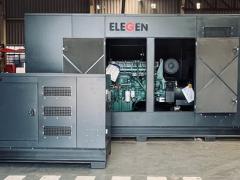Cabinet has approved South Africa’s first Critical Minerals and Metals Strategy, identifying key commodities needed for technologies such as battery storage, wind turbines, hydrogen fuel cells and electric vehicles.
The strategy was announced by Mineral and Petroleum Resources Minister Gwede Mantashe earlier this week, alongside the Draft Mineral Resources Development Bill 2025, which was published in the Government Gazette on May 20 and is open for public comment until August 18.
“The strategy does not view critical minerals in isolation; instead, they are treated as part of a larger ecosystem that drives essential technologies such as electric vehicles, hydrogen fuel cells, wind turbines, battery storage systems, microelectronics and advanced manufacturing,” Mantashe said.
Minerals identified as highly critical include platinum, manganese, iron ore, coal and chrome with others such as vanadium, lithium, cobalt, graphite and nickel flagged for their importance in energy applications.
The strategy includes six pillars to support industrialisation:
- Geoscience mapping and exploration
- Value addition and localisation
- Research and development
- Infrastructure and energy security
- Financial instruments for beneficiation
- Policy harmonisation
Regulatory alignment to speed up approvals
The accompanying draft bill proposes measures to streamline administrative processes, including alignment between the Mineral and Petroleum Resources Development Act (MPRDA), the National Environmental Management Act (NEMA) and the National Water Act.
This alignment could help address past delays and sequencing issues in the environmental authorisation process, said legal experts at Webber Wentzel.
“The bill clarifies that environmental authorisation applications for rights and permits must only be applied for once the MPRDA right or permit application has been accepted. This will clear up the current misalignment between the MPRDA and NEMA,” the firm said.
The proposed changes may have downstream impacts on local supply chains for energy infrastructure, including transformers, conductors, batteries and electrochemical components, Webber Wentzel added.
The bill also promotes local beneficiation, requiring mineral producers to make commodities available for domestic processing. “This is vague and provides too much administrative discretion,” which may affect planning certainty for manufacturers in the electrification and renewable energy sectors, legal experts warned.













